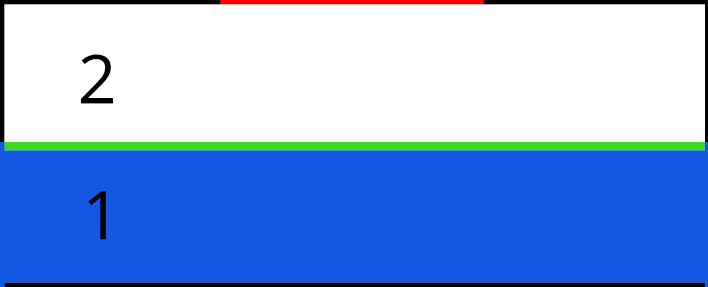I'm using COMSOL to simulate a system where liquid water is evaporated using a vacuum pump, but I am struggling to understand the mass transport process of vapor from the liquid-air interphase to the outlet connected to the pump. The pump reduces the absolute pressure in the chamber, extracts vapor from a chamber, which reduces the vapor concentration, and increases the evaporation rate.
My system consists on a channel where liquid water flows (rectangle 1) and a chamber where the vacuum is applied (rectangle 2). The red line on the top represents the outlet connected to the vacuum pump.
The green line represents a hydrophobic membrane that prevents the liquid water from going up when the absolute pressure on the top is low. However, the water vapor can cross the membrane.
From what I know, in steady state, depending on the vacuum level created by the pump, two situations can happen:
- If the absolute pressure is lower than the saturation pressure of the liquid water, the chamber will contain only vapor and the air content can be neglected. Simulating such a system should be easy. The flow of vapor would be laminar and two boundary conditions would be needed, $p_{sat}$ in the gas-liquid interphase and $p_{vacuum}$ at the outlet.
- However, if the absolute pressure set by the pump ($p_{vacuum}$) is greater than the saturation pressure of the liquid water, some traces of air will remain in the chamber. In this situation, I don't know whether the vapor transport is driven by diffusion only or by both diffusion and convection.
My problem arises in this second situation because I have been unable to find out if both diffusion/convection contribute to the transport of vapor and to find the correct boundary conditions for each of them.
The only B.C. I'm sure of is the concentration B.C. in the liquid-gas interphase, where the concentration equals the saturation concentration.
Any suggestion on how to solve this problem?
